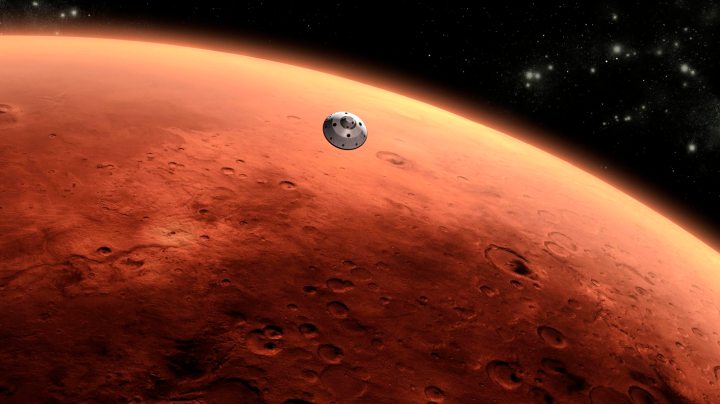Newsdeck
US Science Panel: Next Mars Mission Should Search For Past Microbial Life

NASA's next mission to Mars should look for past microbial life and collect samples to eventually bring back to Earth, a science advisory group said on Tuesday. By Irene Klotz.
The U.S. space agency expects to spend about $1.5 billion, plus launch costs, on a mission to follow the ongoing Mars rover Curiosity, which is scouting an ancient impact crater for habitats that could have supported microbial life.
The so-called Mars 2020 rover would take a more direct approach to learning if life exists beyond Earth, though it would search for past, not present-day, microbes.
“We don’t have the clear indications that life is at such an abundance on the planet that we can go there with a simple experiment … and detect that,” said Brown University geologist John “Jack” Mustard, who chaired the Mars 2020 science advisory team.
NASA tried that approach in the 1970s with the Viking landers and found itself at a scientific dead end, but more recent discoveries about the planet’s chemistry have cast those results in a new light.
The United States, which has been the only country to successfully land and operate on Mars, did not return to the planet’s surface for more than 20 years.
Since then, an increasingly more sophisticated series of orbiters, landers and rovers have turned up evidence that the planet most like Earth in the solar system was once warmer and wetter than the cold, dry desert that exists today.
“To go and look for simple organisms, or not-so-simple organisms, that are living within that toxic, harsh environment, we just think is a foolish investment of the technology at this time,” Mustard told reporters on a conference call.
“What you really want to get at is, ‘Was there ever life elsewhere? Was there a second genesis that had the same characteristics as what we had on Earth?’ To go after those questions, you want to approach it in a logical, systematic, stepwise fashion so that you can be confident about your results as you move forward,” Mustard said.
To that end, the advisory team proposes NASA include a way to collect and store about 31 tubes of crushed rock and soil to be returned to Earth in the future. The panel did not address cost and timing for that part of the endeavor.
The National Academy of Sciences last year ranked a Mars sample return mission as its top priority in planetary science for the next decade.
If the rover found “a dinosaur-type bone, we probably wouldn’t need to have to return that sample. We could recognize that from our current capabilities,” Mustard said.
“Our understanding is that (life on Mars) is likely to be microbial and that’s a darn hard measurement to make and a darn hard measurement to convince the skeptical science community that it is indeed the case,” he said.
Unlike Europe’s planned ExoMars lander, a life-detection mission that is due to launch in 2018, NASA’s rover would not drill deeply into the planet’s surface for samples to analyze. Some scientists believe that any organic materials on or near the planet’s surface would have been obliterated by the planet’s harsh radioactive environment. The advisory panel, however, points out in its report that landing in a relatively recent crater could mitigate those concerns.
The United States had planned to partner with Europe on ExoMars, but backed out of the project last year, citing budget concerns. Since then, Russia has stepped in to fill the gap left by NASA’s withdrawal.
NASA had no immediate comment about how the cost of the Mars 2020 mission compares with what it had expected to spend on ExoMars.
In addition to searching for past life, the new rover, which would launch in 2020, also could include tests that would help pave the way for eventual human missions to Mars, a long-term goal of space exploration initiatives.
NASA officials said they will be studying the team’s report before issuing a solicitation for science instruments for the new rover. DM
Photo: An artist’s concept of NASA’s Mars Science Laboratory spacecraft approaching Mars. The Curiosity rover is safely tucked inside the spacecraft’s aeroshell. REUTERS/ NASA/JPL-Caltech/Handout



















